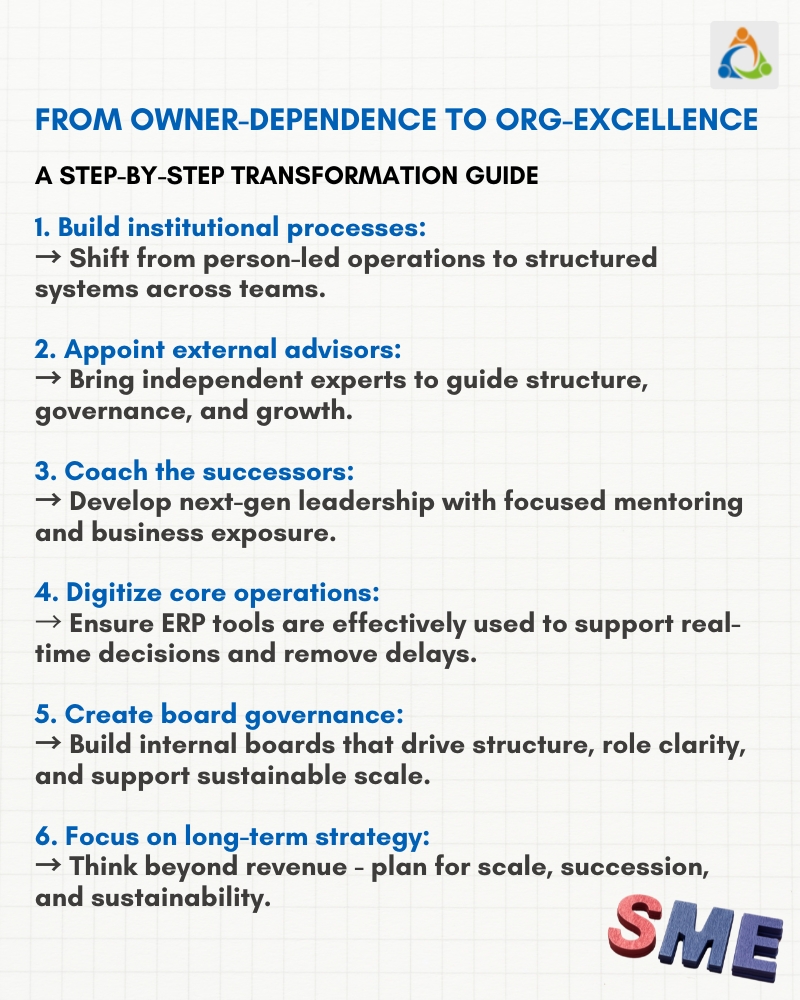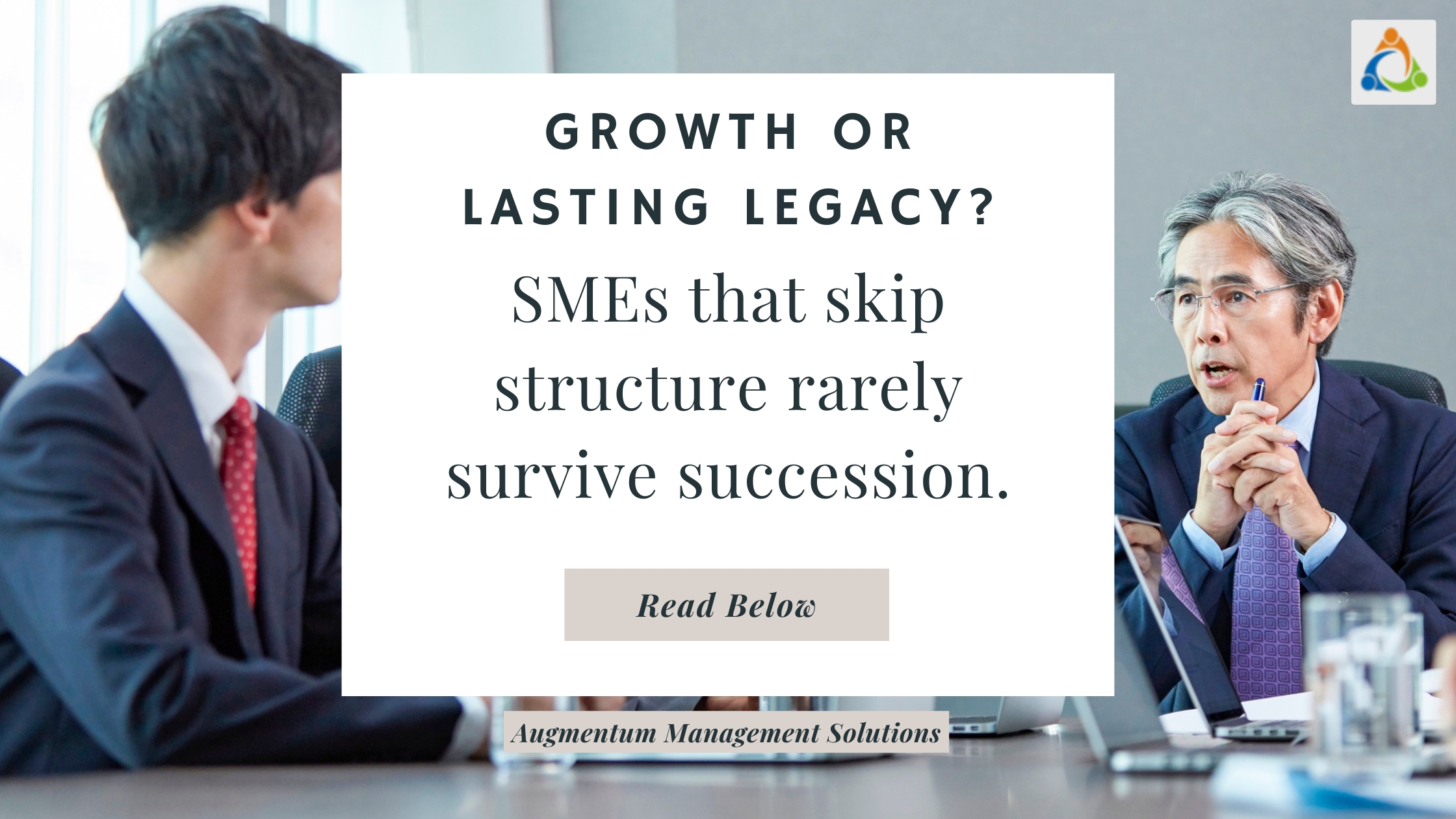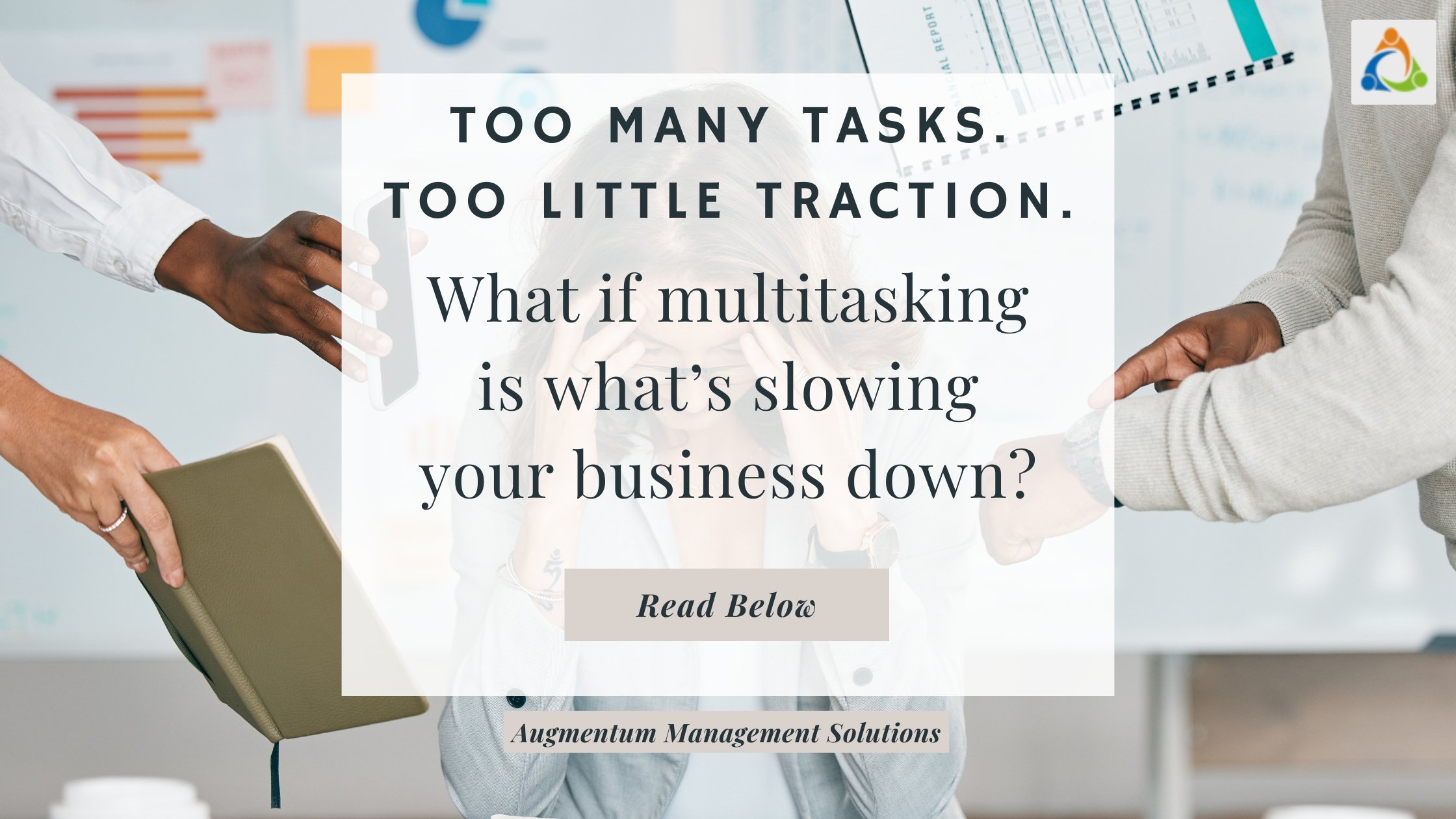Most SMEs begin with the relentless energy of a founder. That energy drives growth, fuels early wins, and builds customer trust. But somewhere along the journey, growth outpaces structure. Decisions remain person-led, processes stay undocumented, and succession is left to chance. What looks like momentum often hides fragility.
Professionalization is the turning point. It is the difference between a business that burns bright for a decade and one that sustains across generations. And yet, most SMEs never take this leap – not because they can’t, but because they don’t know where to start.

Where SMEs Get Stuck
SMEs stall when founder-led habits linger long after scale demands systems. The most common traps include:
- Centralized decision-making that leaves teams dependent on one person.
- Lack of documented processes, forcing employees to rely on memory and verbal instructions.
- Weak succession planning, making continuity fragile when key people exit.
- Minimal external perspective, with strategy limited to what leadership already knows.
- Technology mismatches, where tools exist but fail to reflect actual workflows.
Left unresolved, these red flags cause bottlenecks, frustrated professionals, and missed opportunities. What feels like control is actually dependency in disguise.
The Hidden Cost of Avoiding Professionalization
When professionalization is delayed, the risks compound quietly:
- Visible strain: higher attrition, slower decision-making, and a founder consumed by daily firefighting.
- Invisible strain: stalled innovation, internal politics, and leadership pipelines that never develop.
- Strategic cost: competitors with better governance outpace you in markets you should have owned.
The truth is simple – businesses don’t fail because of weak vision, they fail because strong vision never translates into scalable structure.
Six Practical Moves to Professionalize
Professionalization isn’t theory. It’s a set of deliberate, repeatable steps that any SME can take:
- Build institutional processes: Shift from memory and verbal approvals to documented, shared workflows.
- Appoint external advisors: Add independent voices to guide governance and challenge blind spots.
- Coach the successors: Develop next-generation leaders with mentorship, exposure, and decision authority.
- Digitize core operations: Use ERP and digital tools to support real-time decisions and remove inefficiencies.
- Create board governance: Formalize structures that align priorities, define roles, and ensure accountability.
- Focus on long-term strategy: Look beyond revenue; plan for scale, sustainability, and succession.
Each step moves the business away from dependency and closer to organizational strength.
How to Start Small
Transformation doesn’t have to be overwhelming. Begin with three simple actions in the next 90 days:
- Document five workflows your business can’t afford to get wrong.
- Nominate successors for three critical roles and start shadowing plans.
- Invite one trusted external advisor to review governance gaps.
Small steps compound. Within a quarter, bottlenecks reduce, leaders step up, and teams begin to operate with confidence.
Professionalization doesn’t strip away entrepreneurial spirit – it safeguards it. By embedding structure, accountability, and long-term thinking, SMEs can outgrow founder dependency and build organizations that don’t just survive leadership change, but thrive because of it.



